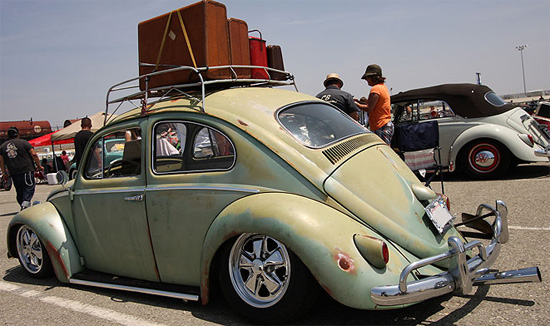Making the Most of Your Air-Cooled VW 1600 Engine
The Volkswagen Beetle. Since it first rolled off the production line in 1938, the People’s Car has left its distinctive tread marks literally all over the world. Achieving icon status from early on as a car you could always count on to get you from point “A” to “B”—and back again—the funny looking “Bug” with the trunk up front, is still out on the road in large numbers. And the car’s continual rise in popularity has created hotbeds of vintage bug restoration all across the country. Aside from the cool factor, it’s clear that some of the Bug’s renewed appeal lies under the hood, in the form of an unpretentious air-cooled engine—a tangible reminder of what great automotive engineering is all about. The most popular engine for restoration purposes is the 1600cc Type1, first introduced in 1970. Should you already be or someday become the proud owner of a vintage VW Beetle sporting the 1600, here are some tips to make sure your engine remains a top performer for years to come.
Check Valve Installation
To accommodate the hydraulic system in the type1 engine (and let’s make the critical assumption that the engine has been rebuilt to factory specifications) it’s recommended that a “check valve” be installed to replace the standard pressure relief valve. Using a check valve increases oil pressure, creating better oil flow throughout the engine. And better oil flow means longer engine life.
Timing: To prevent the engine from pinging, it should be timed with a timing light to a recommended advance of 29-30 degrees at 2500 Rpm. It should be noted that increasing the advance beyond 30 degrees will do little more than increase the risk of burning the tops of the pistons.
Valve Adjustment
Valves should be adjusted to a recommended clearance of 8,000ths of an inch. Intake valves should be adjusted to 6,000ths due to heating issues.
Carburetor
To jet the carburetor properly, first drive the car around for a few minutes and then check the appearance of the spark plugs. If the electrodes have a whitish appearance, the carburetor is running too lean, causing the plugs to overheat. If the electrodes have a black coating the carburetor is running too rich, a condition that will waste gas and dirty the oil much quicker. A properly jetted carburetor should give spark plugs a tan to light-brown coating.
Electronic Ignition
For tune-up ease it’s recommended that you install an electronic ignition, as it only needs to be set one time for the life of the engine.
Gas
To avoid pinging, the 1600 runs best on gas with a minimum octane rating of 89. If this seems on the high side it should be noted that, in the 1960’s the lowest grade of gas was 91 octane. If you happen to live at an altitude at or above 4,500 feet, your engine will rung fine on 85 octane gas due to the thinner atmosphere.
Oil
Just as people function better with the aid of certain vitamins and minerals, the 1600 requires the added lubrication benefits of Phosphorous and zinc. Being that Federal regulations now call for the production of oil that is both zinc and phosphorous free, you will need to purchase oil that has been fortified with those two critical elements. You can find it at high performance stores or your local Chevrolet dealer, because all of those classic 55’ and 57’ Chevy’s need zinc and phosphorous too. One particular line of synthetic oil that is readily available and favored by many vintage VW mechanics is Royal Purple. The recommended oil weight range is 15-40 to 20-50.
The beauty of the Volkswagen Beetle is that it was designed with an engine built to last with a minimum of maintenance. By following these basic maintenance guidelines your elegantly simple, air-cooled 1600 type1 engine should give you miles and miles of enjoyment for many years to come.
About the Author: Jim Marinelli is a freelance writer for Zonar. Zonar provides fleet management software as well as electronic vehicle inspection, tracking and operations solutions for public and private fleets. Zonar is a privately held company headquartered in Seattle, Washington.








 Welcome to VW Tuning Mag – one of the world’s leading blog and complete internet source for owners and enthusiasts of VW tuning and modified cars. VW Tuning Mag keeps you up-to-date on the latest developments in the VW tuning scene from across the world.
Welcome to VW Tuning Mag – one of the world’s leading blog and complete internet source for owners and enthusiasts of VW tuning and modified cars. VW Tuning Mag keeps you up-to-date on the latest developments in the VW tuning scene from across the world.